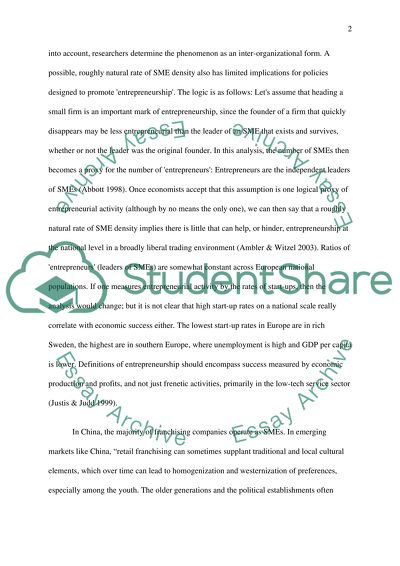Cite this document
(“Franchising of SMEs in China Essay Example | Topics and Well Written Essays - 1500 words”, n.d.)
Franchising of SMEs in China Essay Example | Topics and Well Written Essays - 1500 words. Retrieved from https://studentshare.org/macro-microeconomics/1521384-small-and-medium-sized-enterprises-essay
Franchising of SMEs in China Essay Example | Topics and Well Written Essays - 1500 words. Retrieved from https://studentshare.org/macro-microeconomics/1521384-small-and-medium-sized-enterprises-essay
(Franchising of SMEs in China Essay Example | Topics and Well Written Essays - 1500 Words)
Franchising of SMEs in China Essay Example | Topics and Well Written Essays - 1500 Words. https://studentshare.org/macro-microeconomics/1521384-small-and-medium-sized-enterprises-essay.
Franchising of SMEs in China Essay Example | Topics and Well Written Essays - 1500 Words. https://studentshare.org/macro-microeconomics/1521384-small-and-medium-sized-enterprises-essay.
“Franchising of SMEs in China Essay Example | Topics and Well Written Essays - 1500 Words”, n.d. https://studentshare.org/macro-microeconomics/1521384-small-and-medium-sized-enterprises-essay.


